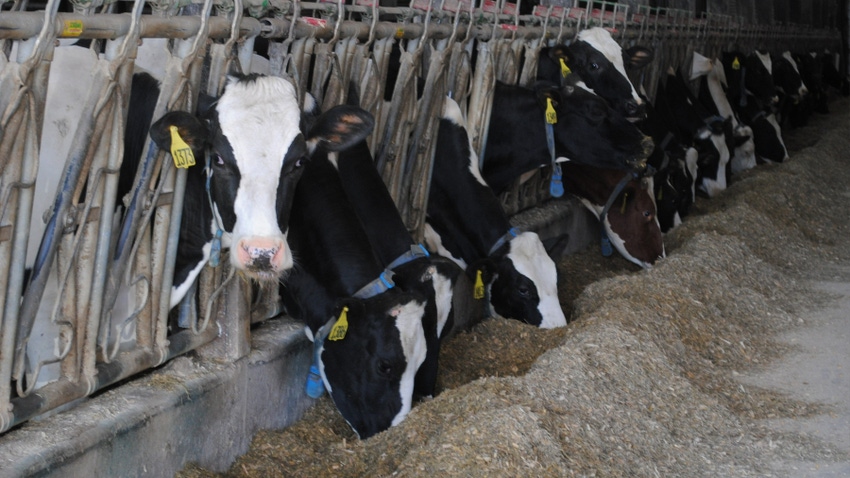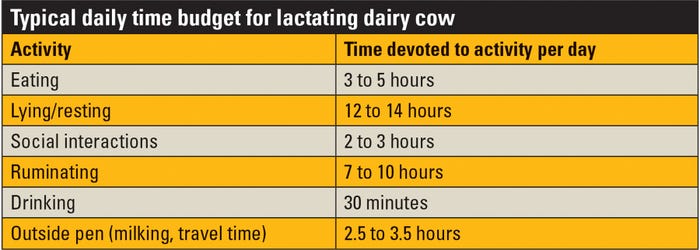April 21, 2023

by Jackie McCarville
Something that is constantly on dairy producers’ minds, no matter how small or large the farm, is cost of production. Feed is the largest input cost on the dairy, making efficient feed bunk management a priority for all dairy farm managers. Fortunately, several factors related to feeding can help lower cost of production and keep more money in your pocket.
Look at the table below showing a cow’s daily time budget. You can see how 24 hours are devoted in a cow’s life. When cows are denied access to feed, water and stalls for more than 3.5 hours per day, they are forced to give up time usually devoted to something else. Many times, that ends up being resting or eating. Therefore, providing cows access to these items helps with feed bunk management. Minimizing time spent outside the pen allows for more time spent eating, resting and ruminating.

Pushing up feed
One key of feed bunk management is making sure cows have fresh feed to eat when they are finished milking, whether it be a total mixed ration or silage. A benefit of cows going to fresh feed after milking is they will remain standing for 30 minutes. This allows for the post-dip to dry and provides adequate time for the teat sphincter muscle to fully close, which reduces the chances of an intermammary infection.
If adding fresh feed is impossible, pushing up feed that is already there can still be a great benefit. In addition to increasing the time spent standing after milking, frequent pushing up of feed can help with increased dry matter intake, fat-corrected milk yield and less feed refusal.
Limiting refusals
Limiting refusals is also a great feed bunk management practice. Bunk management is a balancing act of not underfeeding, which results in cows going without access to feed, and not overfeeding, which results in excessive feed refusals.
Fresh cattle should have the greatest amount of refusals, in the 3% to 5% range, with high producers having around 1% to 5% and late-lactation cows at 0.5% to 3%. For late-lactation pens, a helpful hint to remember is that their feed refusal rate should be close to their dry matter intake rate.
Keeping refusals in these ranges helps cut down input costs. Knowing how much cows are eating by tracking how much feed is delivered and weighing refusals is critical in limiting the amount of refusals at the feed bunk. The goal is not to have an empty bunk for many hours before new feed is delivered, but rather to have cows clean up feed as close to a 1% refusal rate as practical.
Having a plan on how to repurpose refusals can also help save some money. Of course, not all refusals are adequate to be re-fed to other animals. Feed that is hot, slimy, extremely stemmy or woody should just be disregarded. Never feed refusals to pre-fresh or fresh cows. Knowing the nutritional value of the refusals can help determine the best fit for repurposing them. Many times, they can go into a late-lactation diet.
Time of year
Another consideration when thinking about feed bunk management is the time of year. In the winter, cows typically eat more to fulfill their higher energy requirements. During the heat of summer, dry matter intake drops. Be careful that it doesn’t drop too much. Keeping fresh feed in front of cows is especially important in the summer, as it can quickly get heated and spoiled.
McCarville is the University of Wisconsin Extension dairy educator for Grant, Green, Iowa and Lafayette counties.
You May Also Like




